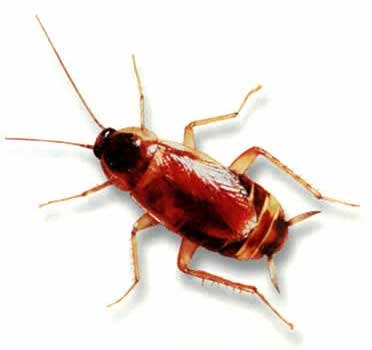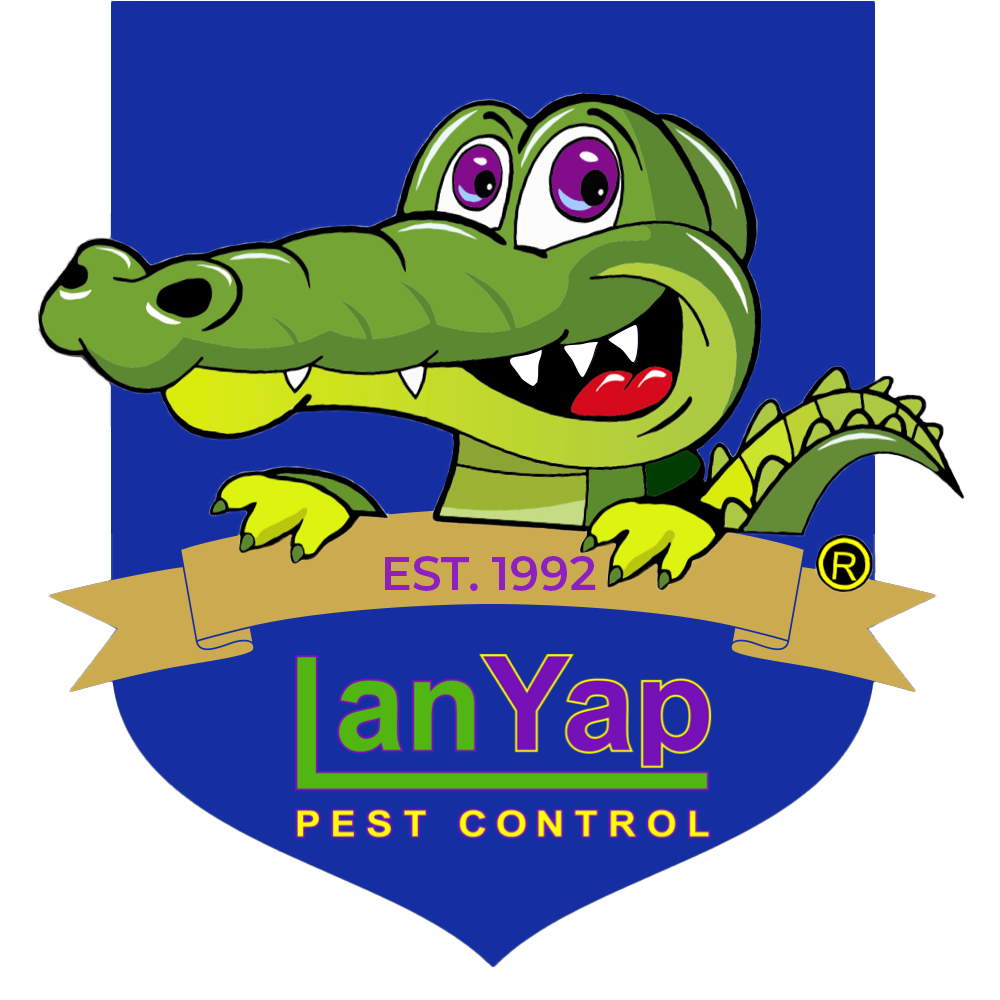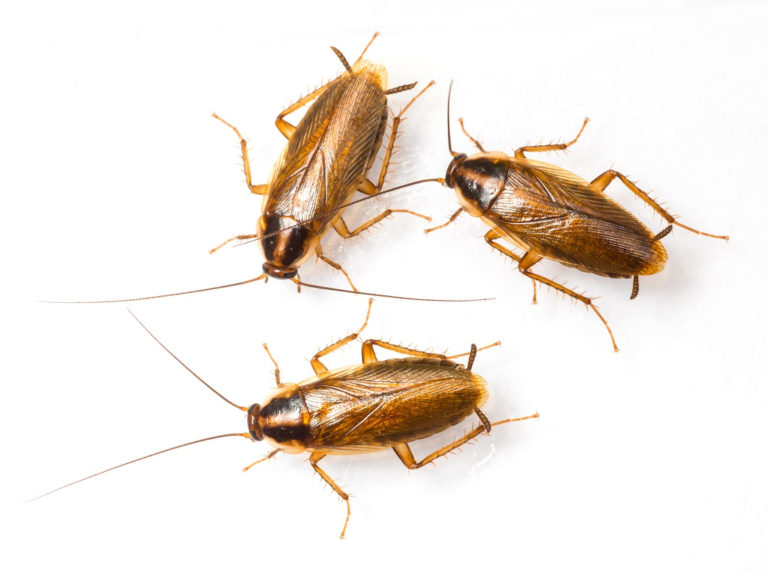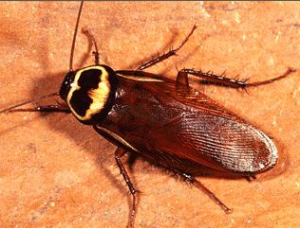German Roaches
American Roaches
American cockroach adults are 1 and 1/2 inches long (38mm), making them the largest of the house-infesting cockroaches. With reddish brown, fully developed wings, the American cockroaches have a yellowish margin on the thorax or body region behind the head. When disturbed, they may run rapidly and adults may fly. Immature cockroaches resemble adults except that they are wingless.
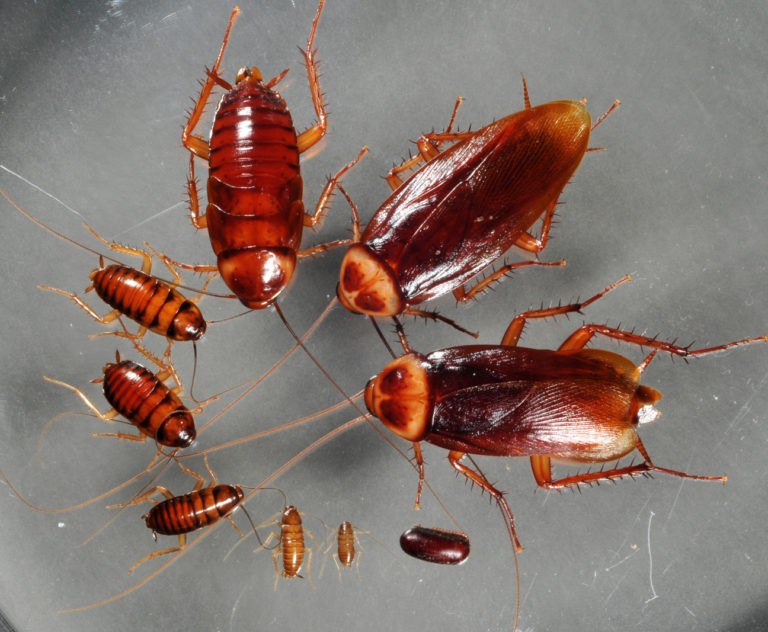
Australian Roaches
Brown Banded Roaches
Adult Brown banded cockroaches have wings, are about 5/8 inch long and are light brown to dark glossy brown. The Brown banded Cockroach is often confused with the German cockroach if not identified properly. Males are capable of flight. Nymphs and females are broad when viewed from above, while the male is slender. The male’s wings cover the abdomen, whereas the female’s wings are short, exposing the abdomen. Most cockroaches have a flattened, oval shape, spiny legs, and long, filamentous antennae. Immature stages are smaller, have undeveloped wings and resemble adults. These roaches have two light, transverse bands across the base of the wings and abdomen. These bands may appear irregular or broken but are usually quite apparent on the nymphs and females. These insects feed on starchy materials and even non-food materials such as nylon stockings. These roaches are active at night, and nymphs and adults jump rapidly when disturbed. These pests do not require as much moisture as German cockroaches and tend to avoid light.
